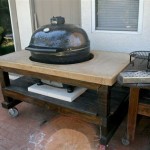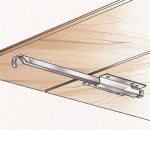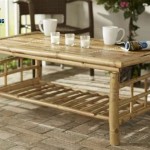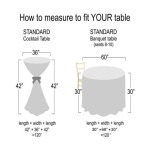Basic Picnic Table Plans
A picnic table is a timeless addition to any backyard or outdoor space. Whether you're hosting a barbecue, enjoying a leisurely lunch, or simply taking a break from the daily grind, a picnic table offers a comfortable and inviting setting for outdoor gatherings. Building your own picnic table can be a rewarding DIY project, allowing you to customize the design and size to fit your specific needs and preferences. This article will guide you through the basic plans for constructing a sturdy and functional picnic table.
Materials and Tools
Before embarking on your picnic table project, it's essential to gather the necessary materials and tools. Here's a comprehensive list:
- Lumber: Select pressure-treated lumber for the table's legs, frame, and top to withstand the elements. You'll need 2x4s for the frame, legs, and supports, and 2x6s for the table top.
- Screws: Use 2 ½-inch deck screws for attaching the frame and legs, and 3-inch screws for securing the table top.
- Wood Glue: Apply wood glue to joints for added strength and stability.
- Clamps: Use clamps to hold the pieces together while the glue dries.
- Circular Saw or Table Saw: For cutting the lumber to size.
- Drill: For predrilling holes before driving screws.
- Measuring Tape: For accurate measurements.
- Level: To ensure the table is level.
- Pencil: For marking the lumber.
- Safety Glasses: Protect your eyes during cutting and drilling.
- Work Gloves: For safe handling of lumber and tools.
Building the Table Frame
Begin by constructing the table frame, which serves as the foundation for the entire picnic table. The following steps provide a detailed guide:
- Cut the frame pieces: Cut four pieces of 2x4 lumber to the desired length for the table's sides. These pieces will form the top and bottom rails of the frame.
- Assemble the frame: Place two side pieces parallel to each other, with the desired width between them. Secure them together at the ends using screws and wood glue. Repeat the process for the other two side pieces.
- Attach the top and bottom rails: Cut two pieces of 2x4 lumber to the desired length for the top and bottom rails. Attach these rails to the inside of the side pieces, using screws and wood glue. The top rail should be flush with the top of the side pieces, and the bottom rail should be flush with the bottom of the side pieces.
- Reinforce the frame: For added stability, consider adding cross supports to the frame. Cut four pieces of 2x4 lumber to the desired length for the cross supports. Attach them to the inside of the frame, using screws and wood glue. The cross supports should be evenly spaced along the length of the frame.
Building the Legs and Supports
Next, assemble the legs and supports that will hold the table frame off the ground. Follow these steps:
- Cut the leg pieces: Cut eight pieces of 2x4 lumber to the desired height for the table legs.
- Attach the legs to the frame: Place the legs at each corner of the frame, ensuring they are square and level. Secure the legs to the frame using screws and wood glue. You can choose to use screws for added security, or you can use heavy-duty bolts and nuts.
- Add supports: For additional strength and stability, you can add supports between the legs. Cut two pieces of 2x4 lumber to the desired length for the supports. Attach them to the insides of the legs, using screws and wood glue. The supports should be located halfway up the height of the legs.
Assembling the Table Top
Now, construct the tabletop, which will provide the surface for dining or other activities. Follow these steps:
- Cut the tabletop pieces: Cut two pieces of 2x6 lumber to the desired length and width for the tabletop. The length and width should be slightly larger than the frame to allow for overhang.
- Attach the tabletop pieces: Place the two pieces of 2x6 lumber side by side on top of the frame, ensuring they are flush with the top of the frame. Secure them together with screws and wood glue.
- Finish the tabletop: Sand the entire tabletop smooth to create a comfortable surface. Apply a sealant or finish to protect the wood from the elements, such as polyurethane or paint.
Adding Finishing Touches
Once the table is assembled, you can add finishing touches to enhance its appearance and functionality. Consider these options:
- Staining or painting: Enhance the appearance of the table by applying a stain or paint in your preferred color.
- Adding a bench: Build a matching bench or two to provide additional seating.
- Incorporating an umbrella hole: Cut a hole in the center of the tabletop to accommodate an umbrella for shade.
- Adding storage: Create a built-in storage compartment beneath the table by using plywood or other materials.
Constructing a picnic table is a rewarding DIY project that can enhance your outdoor living space. With these detailed plans and a little effort, you can create a sturdy and functional table that will provide years of enjoyment for you and your family. Remember to take your time, double-check your measurements, and prioritize safety while working with tools and lumber.

Diy Building Plans For A Picnic Table

Free Picnic Table Plans Construct101

Traditional Picnic Table Plans Construct101

Diy Building Plans For A Picnic Table
:max_bytes(150000):strip_icc()/instrcutables-5b23f5680e23d90036196cb0.jpg?strip=all)
15 Free Picnic Table Plans In All Shapes And Sizes

Diy Building Plans For A Picnic Table

Diy Kids Picnic Table Plans Build For Less Than 100 Making Maanita

40 Free Diy Picnic Table Plans With And Blueprints Decor

25 Diy Picnic Tables Best For Your Yard

Folding Picnic Table Kreg Tool








